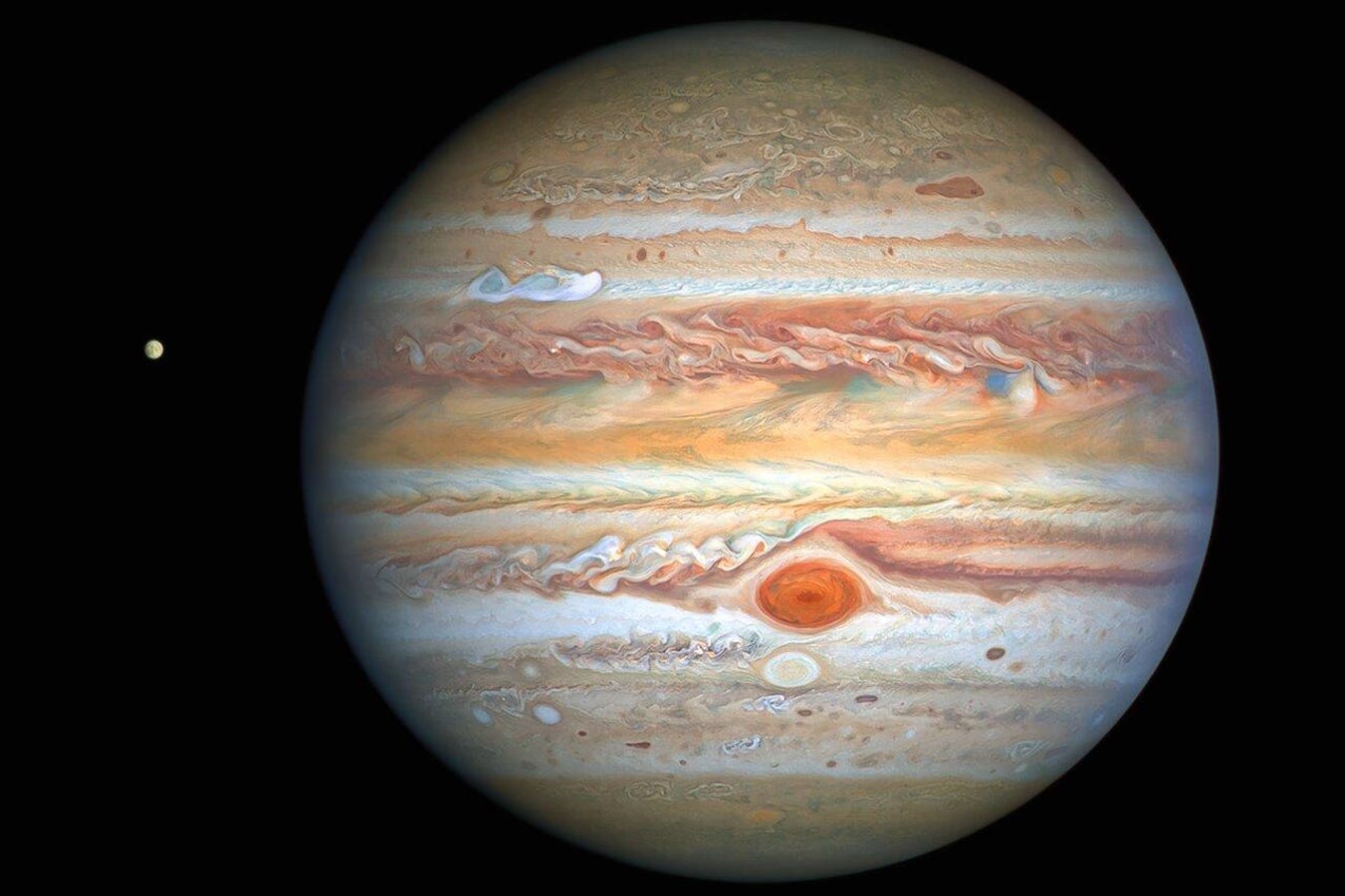The solar system’s largest planet—and its sparkling moons—will this Friday be at their biggest, brightest and best in all of 2023.
Jupiter will also shine for the longest, rising at dusk and setting at dawn as the planet becomes be well-positioned over the next few weeks and months.
Its annual “opposition” to the sun on November 2, 2023 is the central moment in a month of great viewing of Jupiter. If you have a small telescope or even just a pair of binoculars you’ll never get a better chance to see its pinkish bands and giant Galilean moons Ganymede, Callisto, Europa and Io.
Here’s everything you need to know to see Jupiter at its biggest, brightest and best in 2023:
Jupiter’s ‘Opposition’ Explained
Jupiter’s opposition—as with any outer planet—is merely a line-of-sight phenomenon. It occurs when Earth passes between it and the sun. That simple geometry means that Jupiter’s disk will appear to be 100% illuminated by the sun as seen from Earth. The planet will therefore look at its brightest and best for all of 2023.
Since Jupiter takes 12 years to orbit the sun and Earth just a year, this must happen once every 13 months.
Opposition can only happen to planets beyond Earth in the solar system—Mars, Jupiter, Saturn, Uranus and Neptune. That’s because Earth never gets between the sun and the inner planets, Mercury and Venus.
Best Time To See Jupiter
There’s actually no reason to wait until November 2. For a few weeks either side of the annual date of opposition, Jupiter’s disk is almost fully illuminated and looking incredible.
However, in practical terms there’s no need to wait until that one specific night; Jupiter is at its brightest from October 11 through November 23 in 2023, according to Space.com.
The best way to observe Jupiter is through any small telescope, thought binoculars will also very easily pick out Ganymede, Europa, Callisto and Io.
It’s best to wait until Jupiter has risen higher into the sky because the haze of the horizon can affect the viewing.
Three Reasons Why ‘Opposition’ Matters
Jupiter has been looking awesome for a few months now, but at it nears opposition it becomes unmissable. That’s because:
- Jupiter’s disk is as large as it gets all year.
- Jupiter is as bright as it gets all year.
- Jupiter is “up” all night long, rising close to sunset and setting close to sunrise (so you can watch a “planet-rise” in the east and a “planet-set” in the west).
Where To Find Jupiter In The Night Sky
Jupiter is currently moving through the constellation of Aries, between its stars and those of the constellation Cetus. To find it, wait an hour after sunset and look to the southeast. You should see it easily enough as a bright light just above the horizon.
What Will Happen Next To Jupiter
Opposition is just a moment. As Earth moves away from Jupiter on its orbit of the sun, Jupiter will get dimmer in the night sky, rise and earlier and eventually be visible in the western sky just after sunset.
Jupiter will next go into opposition on December 7, 2024.
Wishing you clear skies and wide eyes.
Read the full article here





